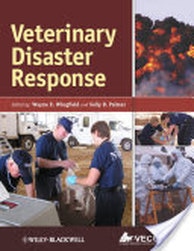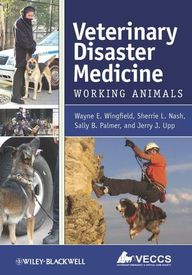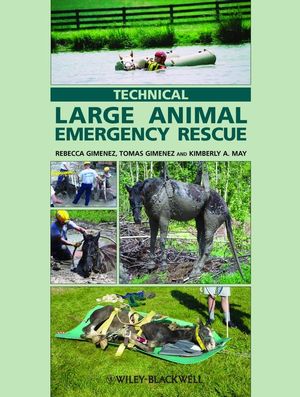History and Legal Aspects of Animal Response Teams
Pets Evacuation and Transportation Standards (PETS) Act of 2006
In August 2006, the U.S. Senate unanimously approved a Senate substitute to HR 3858, the Pets Evacuation and Transportation Standards (PETS) Act, which would give FEMA wider authority in developing disaster plans. For more information. http://aldf.org/resources/natural-disasters/responding-to-disasters/
Michigan State University Animal Legal & Historical Centere
Text below copied directly From: Michigan State University Animal Legal & Historical Center
Brief Summary of State Emergency Planning Laws for Animals
Cynthia Hodges, J.D., LL.M., M.A. (2011)
Text below copied from: https://www.animallaw.info/intro/state-and-federal-disaster-planning-laws-and-pets
See also: https://www.animallaw.info/article/detailed-discussion-state-emergency-planning-laws-pets
Cynthia Hodges, J.D., LL.M., M.A. (2011)
Text below copied from: https://www.animallaw.info/intro/state-and-federal-disaster-planning-laws-and-pets
See also: https://www.animallaw.info/article/detailed-discussion-state-emergency-planning-laws-pets
Since Hurricane Katrina struck New Orleans in 2005, major changes have been made to federal and state emergency planning laws with respect to animals. At the time, there were no laws that required that animals be evacuated, rescued or sheltered in an emergency. The lack of provisions for pets put human health and safety in jeopardy because some pet owners chose to weather the storm at home for fear of what would happen to their animals. As a result, federal and state laws have been passed to include provisions for evacuation of animals, rescue and recovery, shelters and tracking in disaster plans.
In 2006, the federal Pets Evacuation and Transportation Standards (PETS) Act (42 U.S.C.A. § 5196a-d (2006)) was passed. PETS directs the Administrator of the Federal Emergency Management Agency (FEMA) to develop emergency preparedness plans and ensure that state and local emergency plans take into account the needs of individuals with pets and service animals during a major disaster or emergency.
Since then, over 30 states have adopted either a law that deals with disaster planning and pets or have promulgated administrative plans on the subject (see Map). Many state laws require that animals be sheltered and evacuated during an emergency. Such plans establish procedures to coordinate federal, state and local government agencies, volunteer organizations, animal interest groups, and veterinary medical personnel for rapid response to natural disasters affecting the health, safety and welfare of people and animals. While these plans differ from state to state, most address several key elements, which include the care of companion animals, the implementation of state animal response teams, the sheltering of animals, and identification of recovered animals.
In 2006, the federal Pets Evacuation and Transportation Standards (PETS) Act (42 U.S.C.A. § 5196a-d (2006)) was passed. PETS directs the Administrator of the Federal Emergency Management Agency (FEMA) to develop emergency preparedness plans and ensure that state and local emergency plans take into account the needs of individuals with pets and service animals during a major disaster or emergency.
Since then, over 30 states have adopted either a law that deals with disaster planning and pets or have promulgated administrative plans on the subject (see Map). Many state laws require that animals be sheltered and evacuated during an emergency. Such plans establish procedures to coordinate federal, state and local government agencies, volunteer organizations, animal interest groups, and veterinary medical personnel for rapid response to natural disasters affecting the health, safety and welfare of people and animals. While these plans differ from state to state, most address several key elements, which include the care of companion animals, the implementation of state animal response teams, the sheltering of animals, and identification of recovered animals.
Other Resources
Veterinary Disaster Response
|
Veterinary Disaster Response
by Wayne E. Wingfield, Sally B. Palmer John Wiley & Sons, Apr 13, 2009 - 584 pages |
Veterinary Disaster Response is the essential guide to disaster training, preparation, planning, and recovery. The book takes a question-and-answer format to promote understanding and outline the steps for veterinary response to natural and man-made disasters. Veterinary Disaster Response is a must-have reference for anyone involved in disaster medicine, including veterinarians, veterinary technicians, veterinary students, animal control and shelter personnel, search and rescue personnel, and emergency response teams
|
A preview of this book in Google Books allows access to information such as:
What is the origin of state animal response teams (SARTs)?
What are state Veterinary Medical Reserve Corps (VMRC) or similar programs.
What is the Medical Reserve Corps?
https://books.google.com/books?id=kffqobiSuqAC
https://books.google.com/books?id=kffqobiSuqAC&printsec=frontcover#v=onepage&q&f=false
What is the origin of state animal response teams (SARTs)?
What are state Veterinary Medical Reserve Corps (VMRC) or similar programs.
What is the Medical Reserve Corps?
https://books.google.com/books?id=kffqobiSuqAC
https://books.google.com/books?id=kffqobiSuqAC&printsec=frontcover#v=onepage&q&f=false
|
Veterinary Disaster Medicine: Working Animals by Wayne E. Wingfield, Sherrie L. Nash, Sally B. Palmer, Jerry J. Upp |
Veterinary Disaster Medicine: Working Animals is a comprehensive guide to providing first aid to service dogs and horses. Covering both common and uncommon injuries ranging from exercise-related myopathy to bomb blasts, chemical injury, and biological agents, the book provides information necessary for triage, diagnosing, and treating service animals in the aftermath of a disaster. Presented in an easy-to-use outline format, Veterinary Disaster Medicineoffers guidance for the veterinary medical responder prior to and following a disaster.
With chapters including first aid, triage, weapons of mass destruction, radiation injury, pathogens, and euthanasia, the book presents essential information for many potential disaster scenarios. Veterinary Disaster Medicine appeals to veterinarians, veterinary technicians, veterinary students, search and rescue personnel, and emergency response teams. |
|
Technical Large Animal Emergency Rescue
by Rebecca Gimenez (Editor), Tomas Gimenez (Editor), Kimberly Anne May (Editor) |
The recognition of the importance of safe large animal rescue is quickly growing. The prevailing attitude of large animal owners, whose animals are often pets or a large financial investment, is to demand the safe rescue and treatment of their large animals in emergency situations. Technical Large Animal Emergency Rescue is a guide for equine, large animal, and mixed animal veterinarians, zoo and wildlife veterinarians, vet techs, and emergency responders on how to rescue and treat large animals in critical situations while maintaining the safety of both the animal and the rescuer. This book is a must have reference for any individual who deals with large animals in emergency situations.
|



